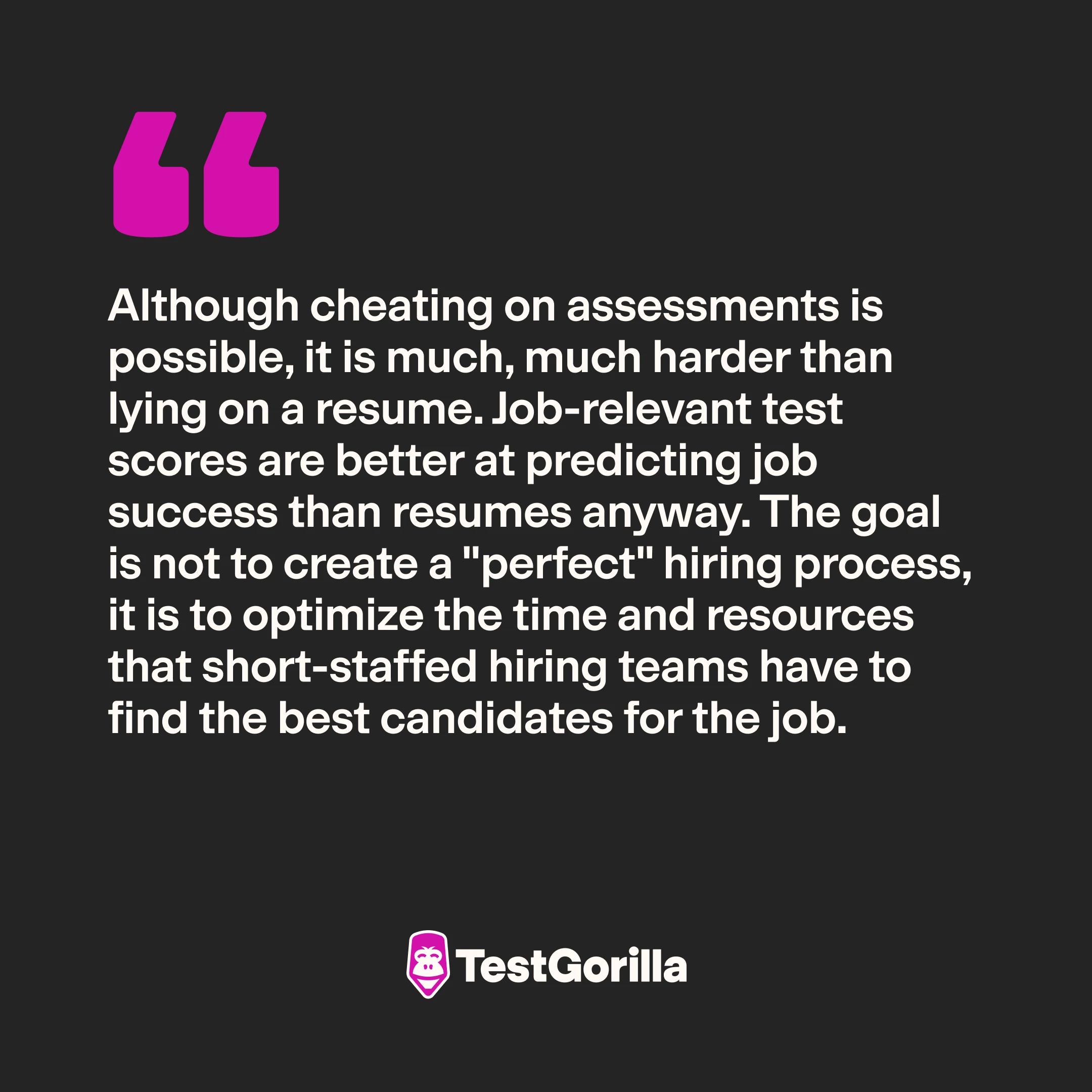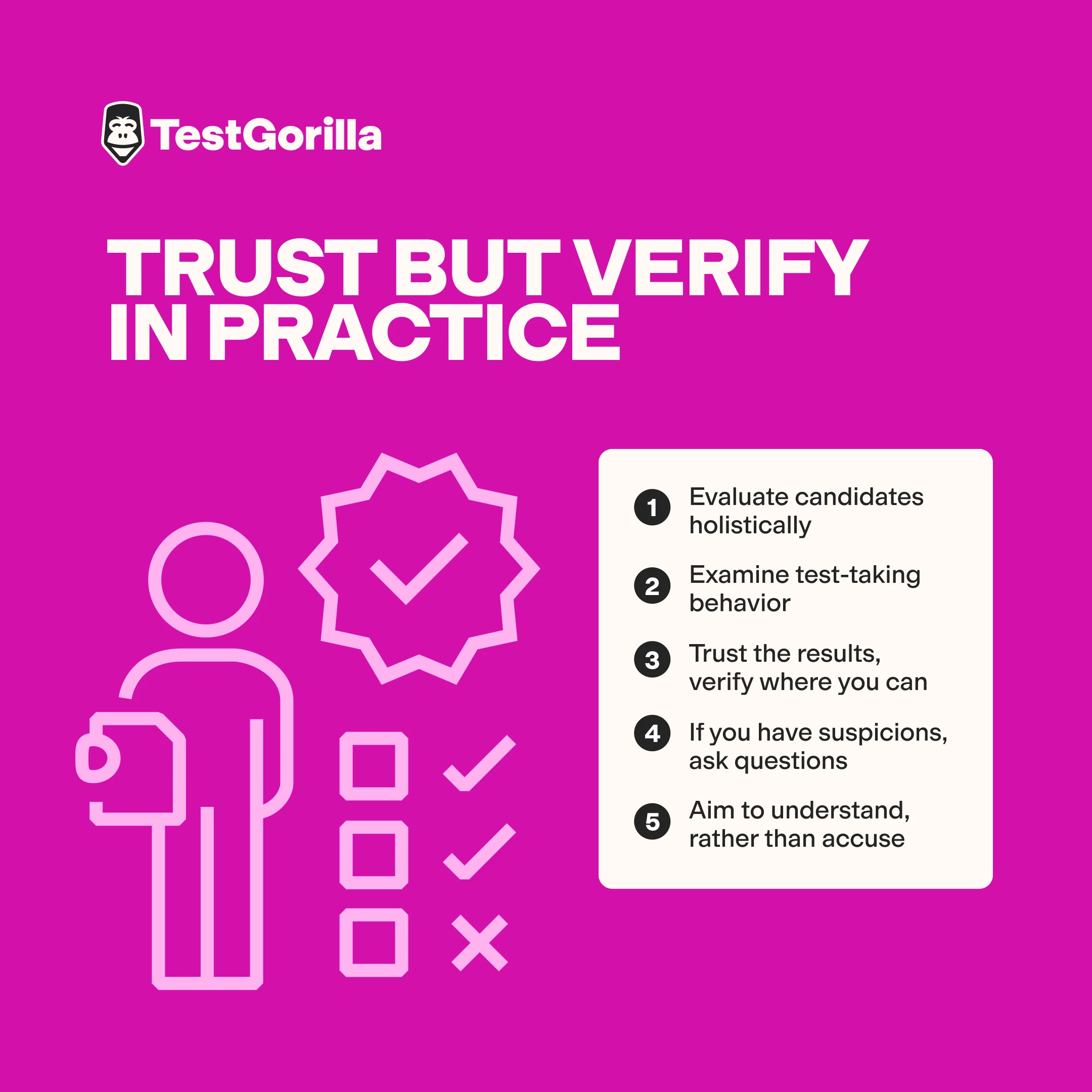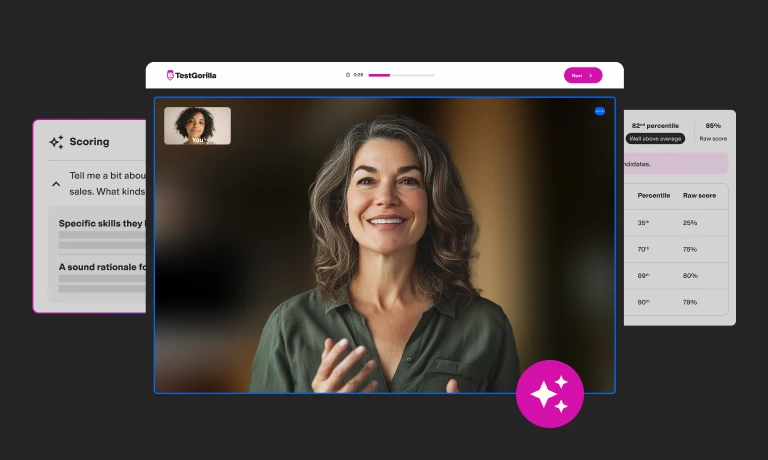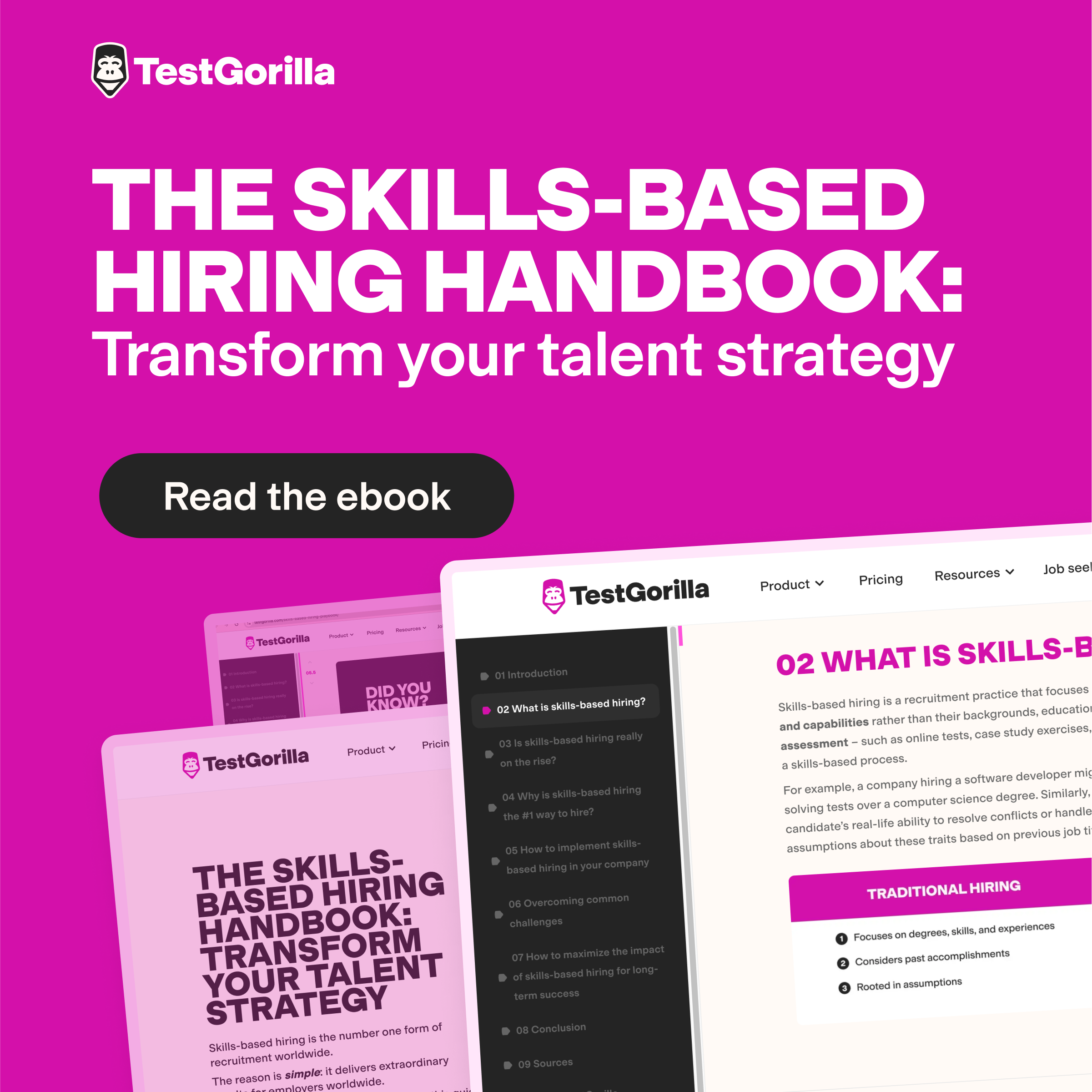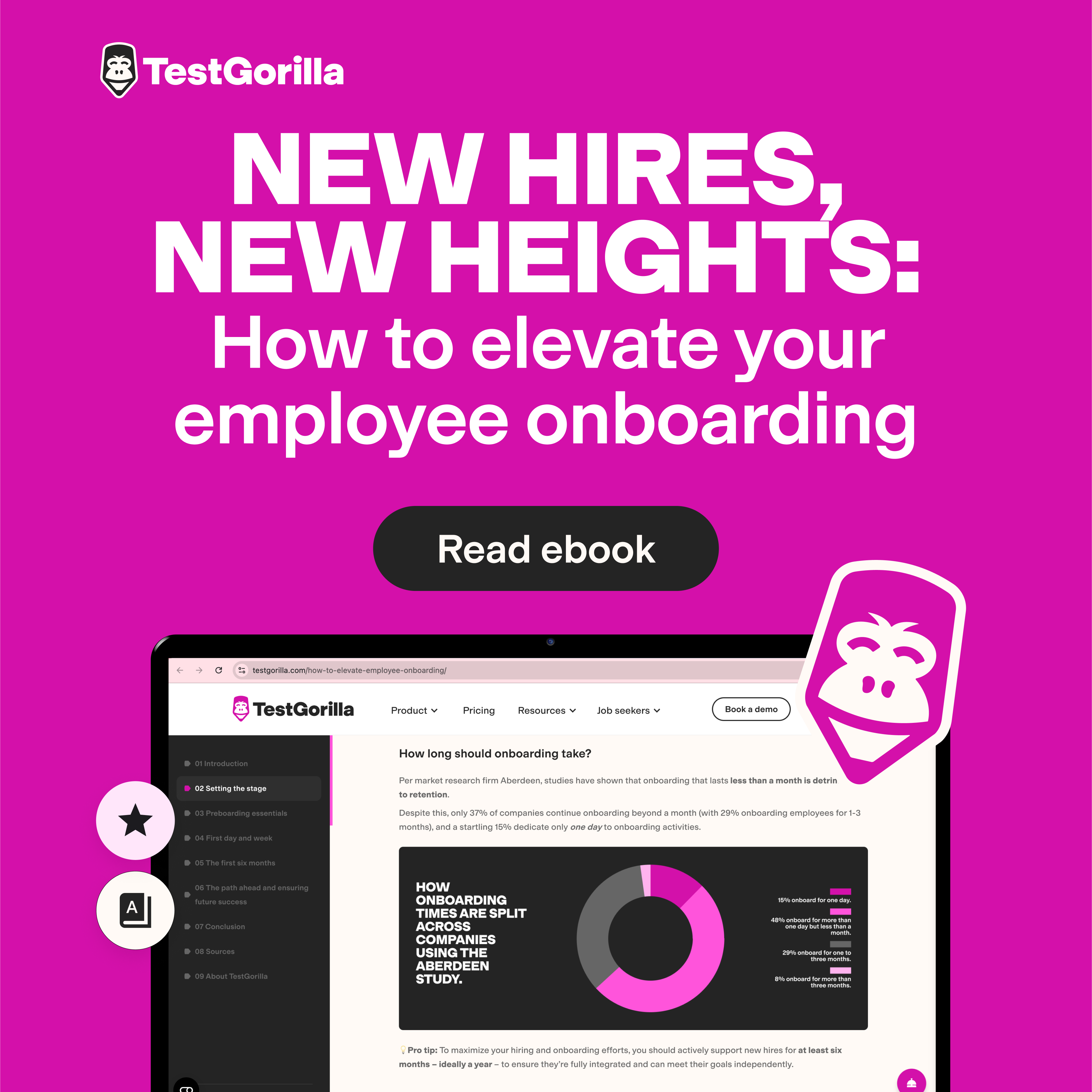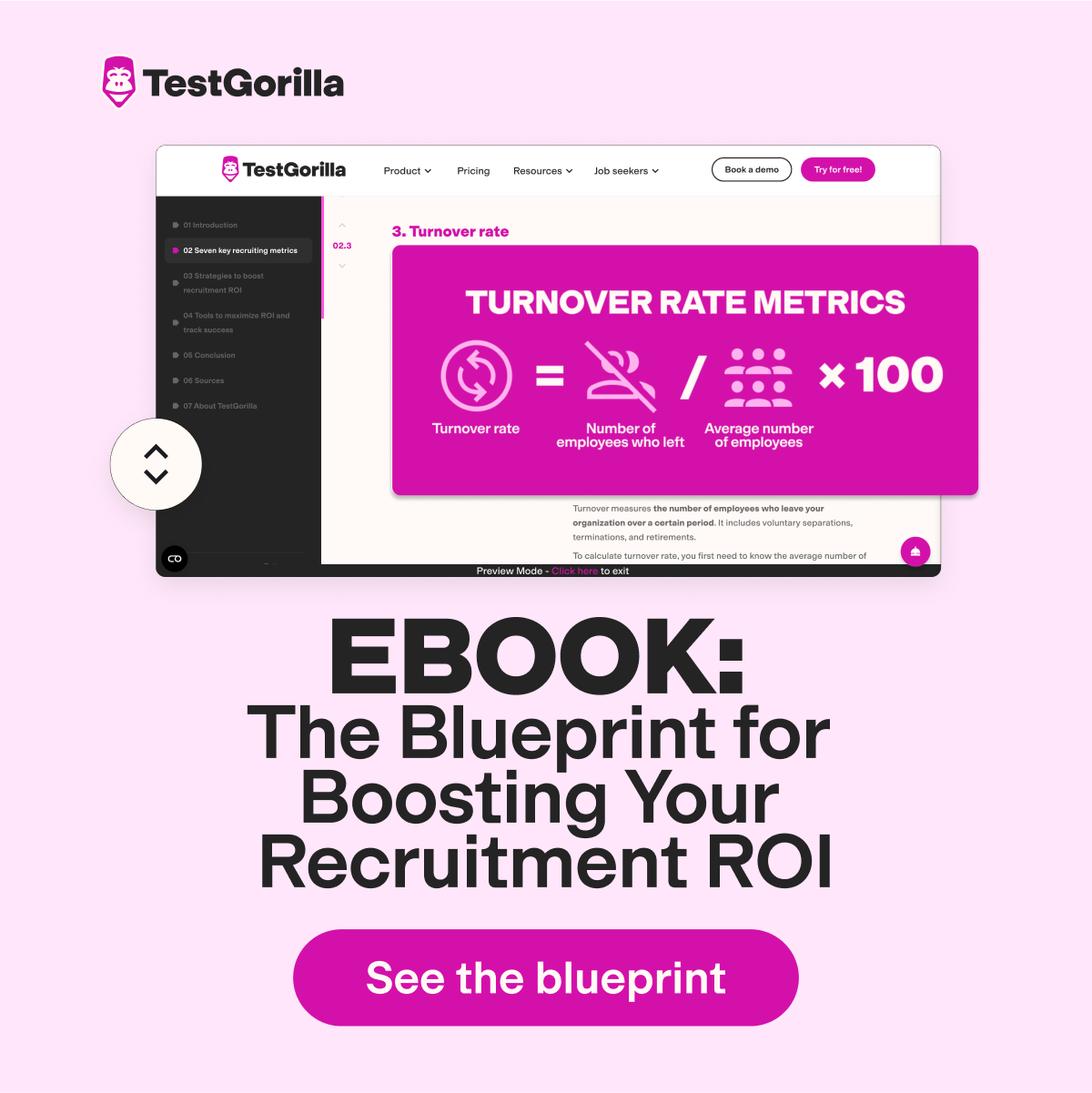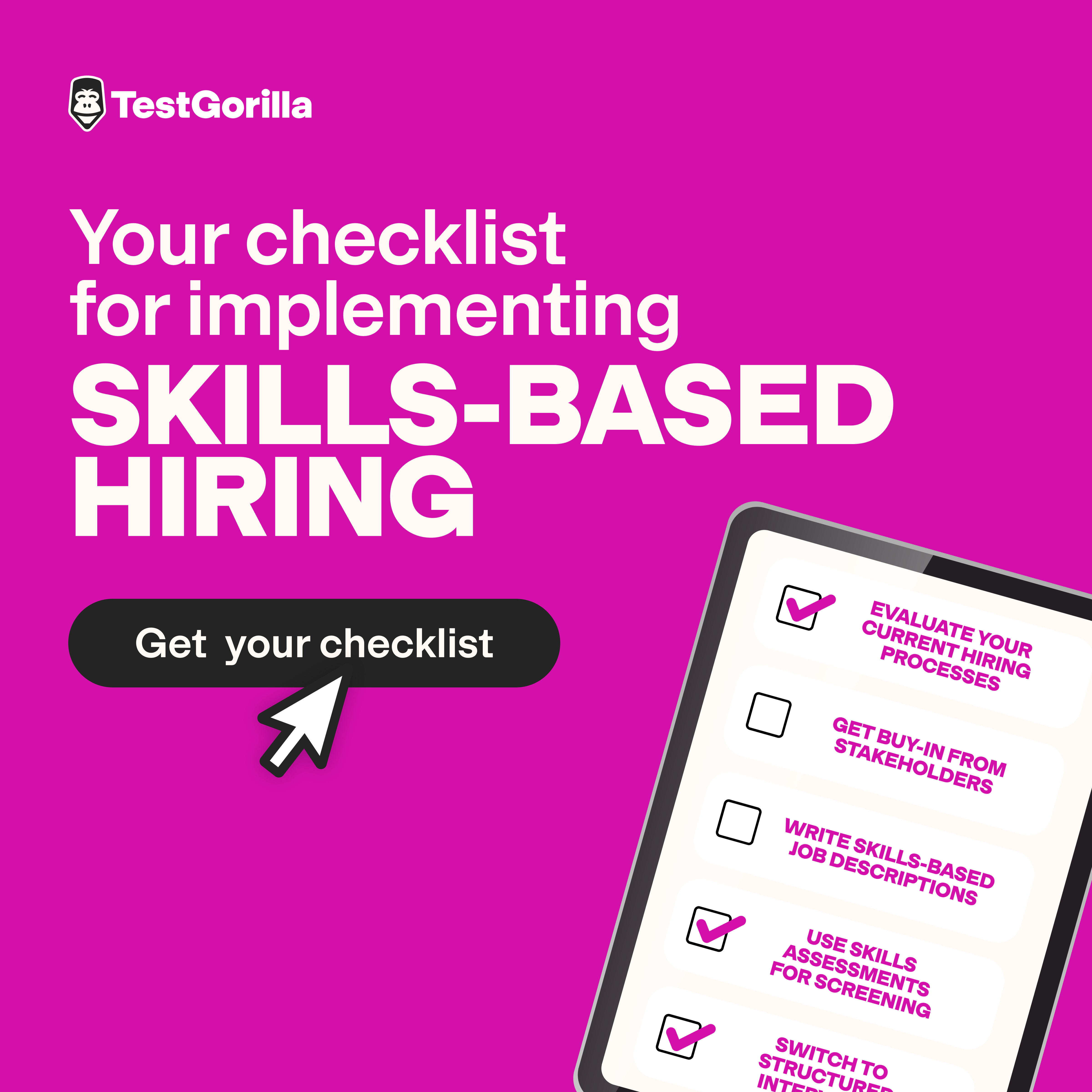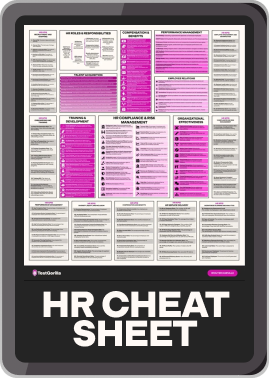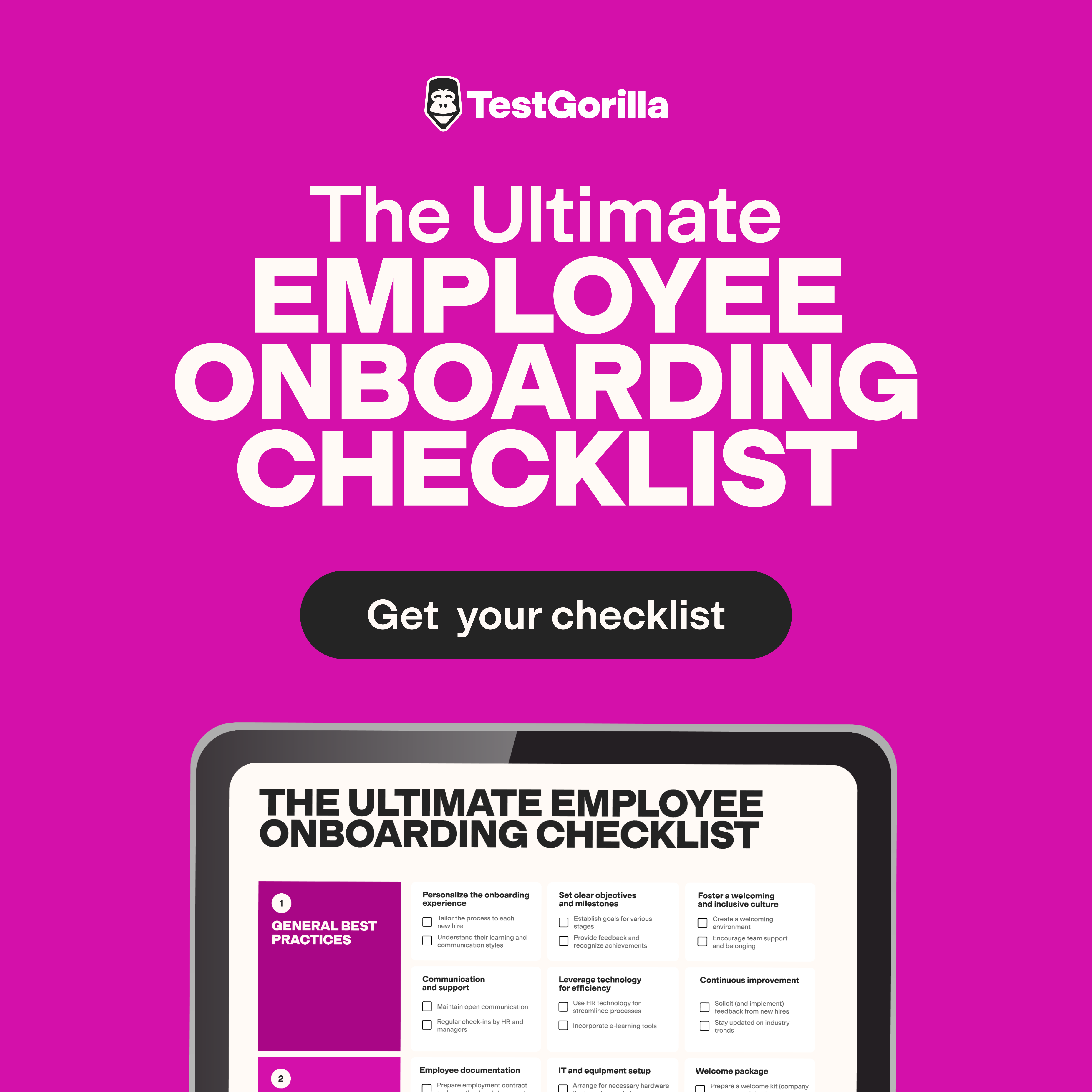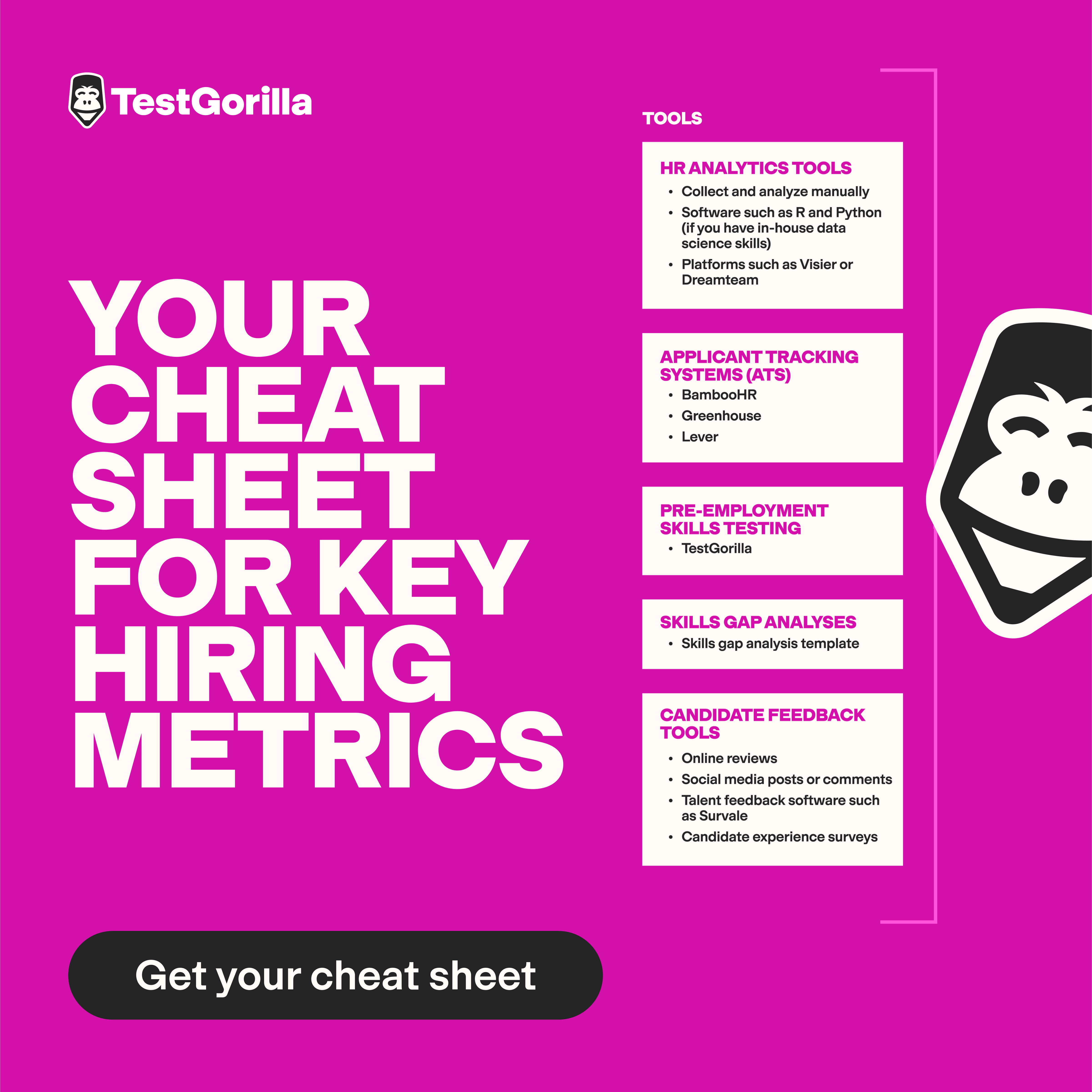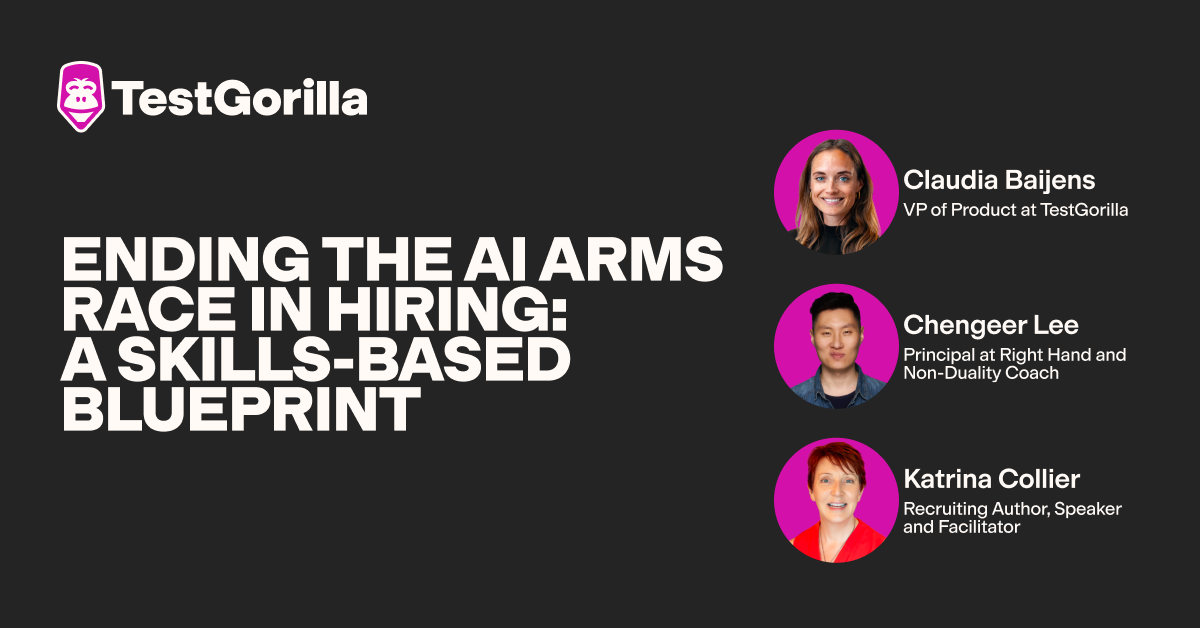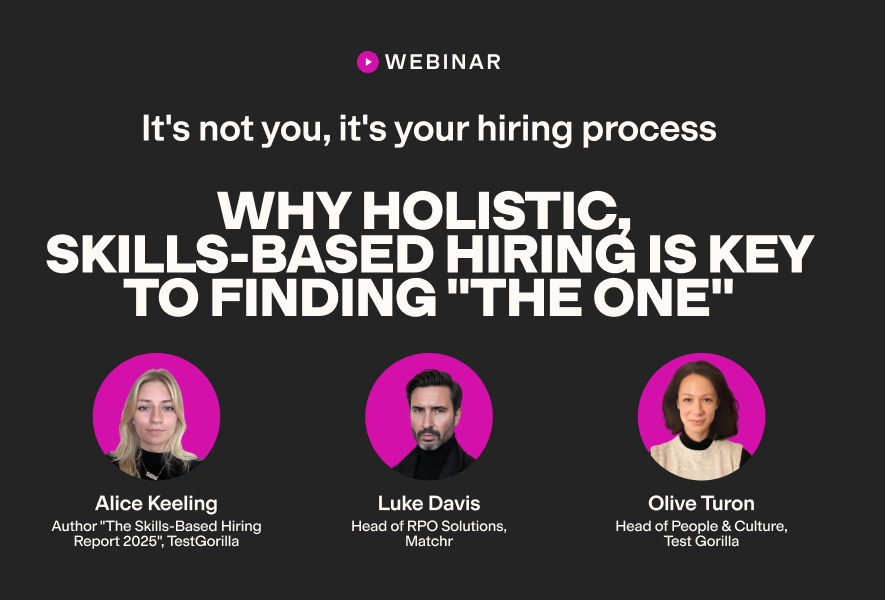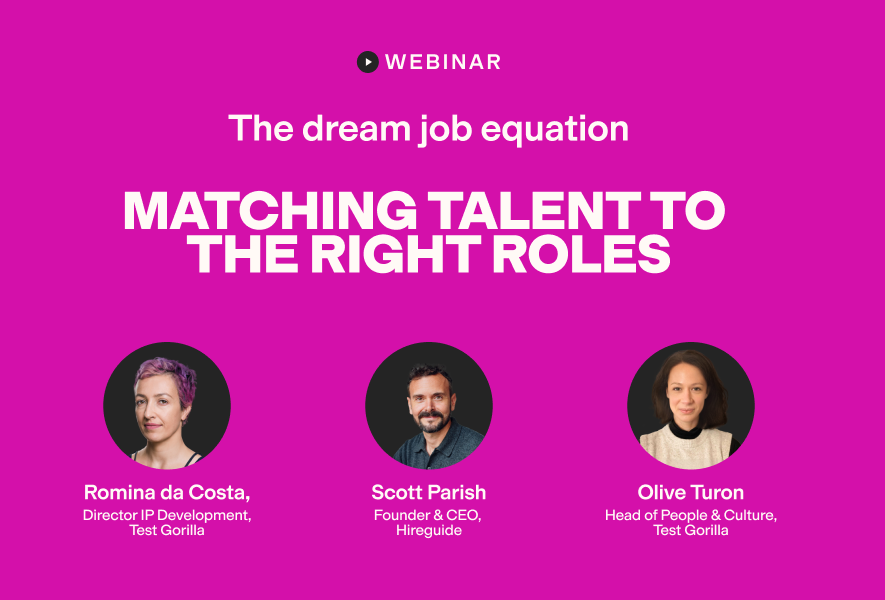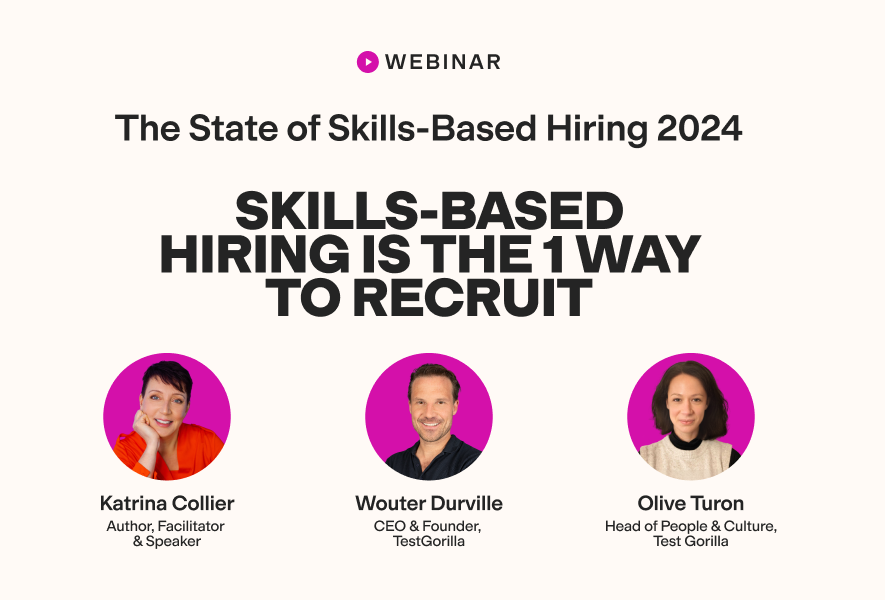No one wants to tell you this, but it’s impossible to prevent cheating
As AI grows more capable and is being used more frequently by humans everywhere, I’ve noticed one topic rearing its head more commonly – and more aggressively – than usual.
That topic is cheating. Employers are concerned about how easily and effectively job seekers can now use AI to complete job applications, assessments, work assignments, and anything else designed to evaluate a candidate’s abilities against the requirements of the role they’re applying for.
In this blog post, I’ll dive into this topic a little bit more. By the end, you might want to hit refresh on your concerns about cheating – and hopefully, you’ll understand how we’re approaching it at TestGorilla.
First, a reality check
The spectacular evolution of AI in the last 5 years or so is unprecedented, and it can feel scary. It poses opportunities and threats across almost every professional domain, and it has undoubtedly introduced new and effective ways for candidates to cheat their way into an interview (or even into a job).
I’m not here to deny that. But I am here to simplify things and remind employers of two things that seem to get forgotten in the fog of AI panic.
First of all: It has never been and will never be possible to make things “cheat-proof”. This is the uncomfortable truth. Providers are more or less prepared to detect or prevent cheating – but can’t claim to be able to prevent it 100% of the time. Human capacity for creativity is infinite, and there will always be someone who is days away from inventing a totally new way to cheat.
And secondly: although cheating on assessments is possible, it is much, much harder than lying on a resume. Job-relevant test scores are better at predicting job success than resumes anyway. The goal is not to create a "perfect" hiring process, it is to optimize the time and resources that short-staffed hiring teams have to find the best candidates for the job.
On top of this, only a small minority of candidates will cheat. Our research shows that only 1 in 6 have attempted it. Doesn’t it make sense to design hiring processes for the many, not against the few?
Let’s go back in time…
Way back in the day, candidates applying for a job that had an assessment component to the hiring process would file into a room and respond on paper to the questions and items that were in the assessment. Then computers were introduced. Assessments started to happen on those, and there was a big fuss about whether or not an assessment taken on a computer could produce a valid result. (Spoiler: It could.)
Then along came the internet. All of a sudden, you could send your assessment results over the internet and get your scores back faster than ever before, no physical mail or paper involved.
This sped up recruitment processes. You no longer had to wait weeks for scores; you could get them back the day of assessment. When the internet got better and faster, you could actually get them in real-time. Employers were buzzing.
Suddenly, everyone has a computer at home. Wanting to broaden their recruitment pools, customers started asking if candidates could test at home for convenience. The developing internet made this possible, and companies started responding to this demand. At this point in time, the term Unproctored Internet Testing (UIT) enters the assessment industry lexicon.
The best insights on HR and recruitment, delivered to your inbox.
Biweekly updates. No spam. Unsubscribe any time.
Concerns about cheating aren’t new
The introduction of UIT marked a major shift in the industry. In the early 2000s, it came into full force, and concerns about candidates cheating started getting voiced.
“But candidates can cheat if they test at home!”
Yes – that’s a risk inherent with assessment without a proctor (and let’s be honest, even proctors aren’t fool-proof).
“How will I know if the candidate who took the test is the one I’m interviewing?”
Back in 2005, you couldn’t. You’d have to verify it’s them by asking them questions about their assessment experience – and if the answers didn’t match up, you’d remove them from the recruitment process. But things evolved and now there are ways to tell. TestGorilla, for example, offers you a way to take candidate snapshots that let you see if the person who took the test is the person you're interviewing now. “Will the assessments even work if they’re administered in an UIT format?”
Yes. Studies comparing the criterion-related validity of proctored vs. unproctored assessments have found that they have similar levels of validity. [1] This means that both scores from on-site and home testing predict job success. That’s the greatest endorsement you can have for any hiring tool: That it is predictive of performance in the job.
The only thing that’s changed? Now we’re blaming AI
Cut to today, and the only thing that’s really changed is the acronym for the perceived problem of candidates cheating. Then it was UIT. Now, it’s AI.
The solutions are the same. If you’re concerned about your candidates using AI to cheat on assessments, you have to create an environment where it doesn’t make sense to use AI.
You can do this by bringing them on-site and testing them in front of a proctor. If that’s too much hassle (which it probably is), you can pay for and use a testing center with proctors there. If you don’t want to inconvenience your candidates by forcing them to drive to a testing center, you can use an internet proctoring system (these are expensive and come with concerning rates of false positive alerts, but it’s an option, if you’re happy to risk eliminating your strongest candidates by accident).
Both of these options are difficult and expensive. Really, the optimal way to create such an environment is to take a "trust, but verify" approach. It’s effective and is easy to achieve using a multi-stage hiring process. Let’s dig into it.
Trust, but verify
In case you haven’t come across it before, “trust, but verify” is a principle that encourages faith in someone while also taking measures to ensure that they are acting in accordance with your expectations (i.e., not cheating). This means that you trust your candidate scores, but you also make a conscious effort to verify their competence once they get shortlisted.
This is the central idea of designing for the many, and not against the minority – you put in place a process that is candidate-friendly and convenient. Into that process, you intertwine guardrails and checks, to ensure no dishonest candidates are passing. Instead of trying to become “cheat-proof”, you remain laser-focused on the real goal: Hiring the best possible candidates.
Time consuming on-site testing, expensive test centers, proctoring that you may or may not be able to trust – these are all things that will reduce the number of candidates willing (and able!) to go through your process. In other words, things that will reduce your chances of finding a truly great fit for your organization. In contrast, the "trust, but verify" approach allows you to assess many candidates, and verify the ones that catch your eye.
Basically, you’re trusting your candidates but also taking steps to verify that they’ve acted honestly. Trust is important, but it does not replace the need for due diligence.
Trust but verify in practice
What does this look like in practice? I’m glad you asked. Hiring is generally a multistage process, so you’ll have opportunities to verify information gathered at the earlier stages during the later stages of the process. Here’s what that could look like:
Evaluate candidates holistically, taking into account their test scores together with their resumes and scores from any other early parts of the process. The aim is to collect various data points in order to get a more nunanced picture of your candidates.
Examine test-taking behavior. We’ve come a long way from early home testing, and TestGorilla has anti-cheating measures in place that can help you understand what they were doing while taking the test. Use this information to your advantage.
Trust their test results, and verify them where you can. If you decide to take a candidate to the next stage of your hiring process, you have an opportunity to verify more thoroughly. Ask shortlisted candidates additional technical or skills-based questions. Have them outline their thinking process that led them to an answer.
If you have suspicions about cheating, ask questions. Approach candidates with a curious and honest attitude. A candidate has a poor resume but aced the coding tests? Ask them why that might be the case. They triggered a lot of behavioral flags? Ask them about the test-taking experience.
Aim to understand, rather than accuse. Keeping an honest and direct tone with the candidate can help you see not only whether you should trust them, but also how they navigate tough conversations that every workplace is bound to have.
Remember, your goal is not to “catch out” as many cheating candidates as possible. Your goal is to confidently find the best person for the job.
Our approach to assessment integrity
At TestGorilla, we know that ensuring fair and reliable assessments is crucial for both candidates and companies. You want to be confident in your hiring decisions, and we're here to provide that assurance. While some might falsely claim to offer "cheat-proof" assessments, we believe in a transparent and realistic approach. Complete prevention of cheating is an impossible challenge, and making false claims about it isn't our style.
Our focus is on creating a balanced system that discourages dishonest behavior and detects outliers, all without compromising the candidate experience. We're continuously refining our approach, combining thoughtful design, effective deterrents, robust detection methods, and clear education for everyone involved.
The result is that our users are equipped with the tools to understand candidate engagement. They can then identify patterns and draw meaningful conclusions from assessment behavior. In other words, we equip them with the confidence to trust and the tools to verify their candidates’ test results.
A reminder: Ask yourself a different question
I’m going to round off this article by handing over to one of our Senior Product Managers, Gustavo Imhof, for one final reality check. What Gus has to say is this:
“Guess what? People have been lying on resumes for years. (Catch Me If You Can even made it glamorous.) It's human nature. People can cheat on assessments very much like they can lie on resumes. The question we should ask isn't "why can't we stop cheating on assessments," but rather: “Do assessments still provide far more value than resumes do?” and “Do they do a better job of predicting job success?”
The answer is a resounding yes. Perhaps, rather than worrying about whether candidates could cheat using AI, we should focus on building hiring processes in ways that bring value, both for your hiring team and your candidates.
Thanks for reading! For related TestGorilla blog content, check out:
Sources
Beaty, J. C., Nye, C. D., Borneman, M. J., Kantrowitz, T. M., Drasgow, F., & Grauer, E. (2011). Proctored Versus Unproctored Internet Tests: Are unproctored noncognitive tests as predictive of job performance?, International Journal of Selection and Assessment, 19(1), 1-10. International Journal of Selection and Assessment, 19(1)
You've scrolled this far
Why not try TestGorilla for free, and see what happens when you put skills first.


